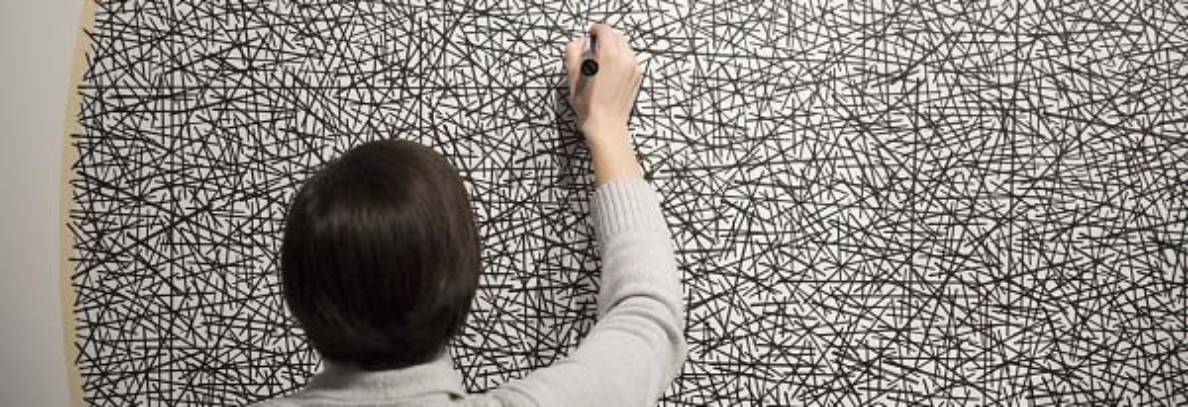Douglas Gordon was born in 1966 in Glasgow, Scotland. From 1984 to 1988, Gordon studied at Glasgow School of Art, Scotland, and from 1988 to 1990, he studied at The Slade School of Art, London. Gordon is a conjurer of collective memory and perceptual surprise whose tools include commodities and mechanisms of everyday life. Into a diverse body of work—which spans narrative video and film, sound, photographic objects, and texts both as site–specific installation and printed media—he infuses a combination of humor and trepidation to recalibrate reactions to the familiar.
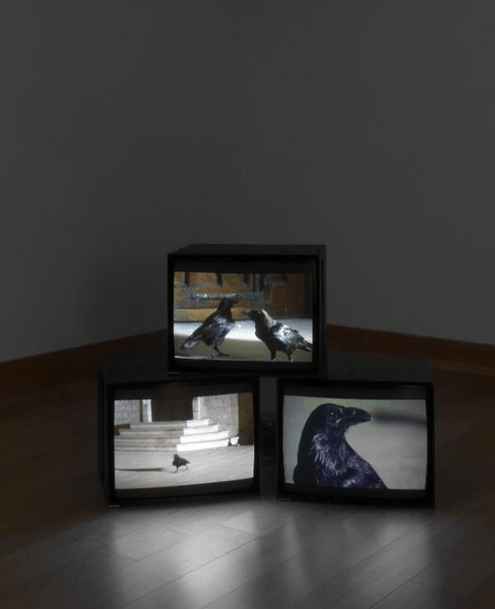
Looking Down With His Black, Black, Ee (2008)
On three monitors a filmed sequence of crows wander on the roof of a gothic church. Each sequence starts with the eerie screeching of the birds, followed by a spotlight that continuously chases them as they move around, eat and attempt to fly. The raven has often been used to symbolise bad omens or death in literature and art, Edgar Allan Poe famously depicted the raven as a supernatural messenger in ‘The Raven’ (1845). Here Gordon portrays birds as a symbol of menace and explores film’s ability to elicit fear. The title of the work comes from a popular Scottish poem about a bird sitting on a treetop, while looking down on a group of children.
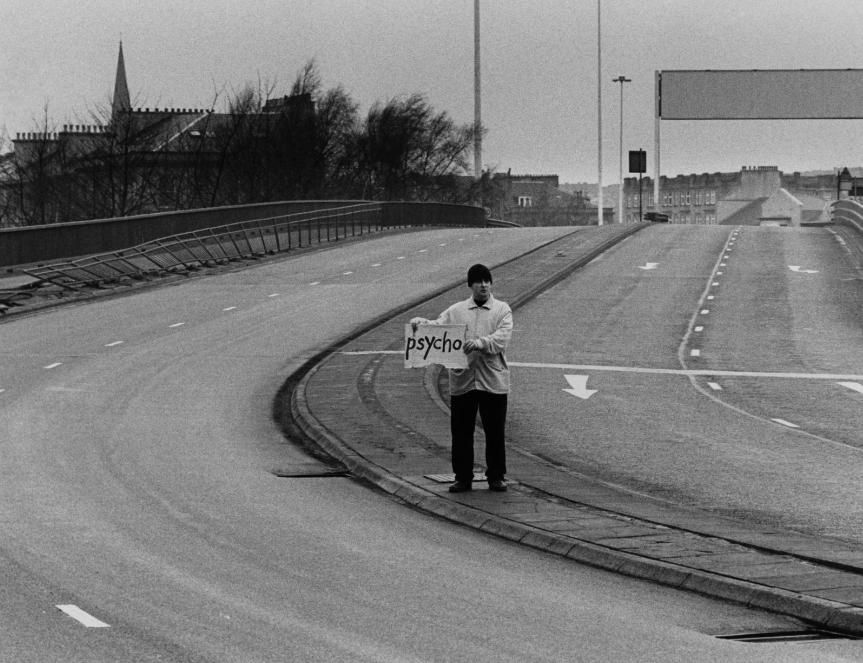
Psycho Hitchhiker (2004)
This black and white photograph documents Douglas Gordon as a hitchhiker holding a sign addressed to oncoming drivers, but instead of a destination Gordon has written the word ‘Psycho’. Gordon elicits fear into the imagination of onlookers via this simple act of public performance art, in an era where the travelling loner is seen as threatening rather than vulnerable.
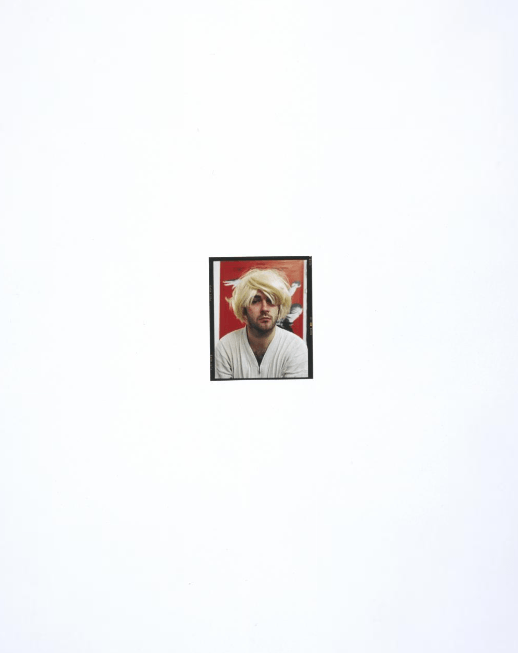
Self-portrait as Kurt Cobain, as Andy Warhol, as Myra Hindley, as Marilyn Monroe (1998)
In this self-portrait, Gordon merges and mimics iconic images of well-known blondes – Cobain, Warhol, Hindley and Monroe – in a single photograph. All the figures appropriated by Gordon had obviously dyed hair, and the artist contrasts their often notorious life histories with ideas of purity traditionally associated with blondeness. Gordon’s pose also refers to ‘Rrose Sélavy’, the notorious alter ego of the Dada artist, Marcel Duchamp.
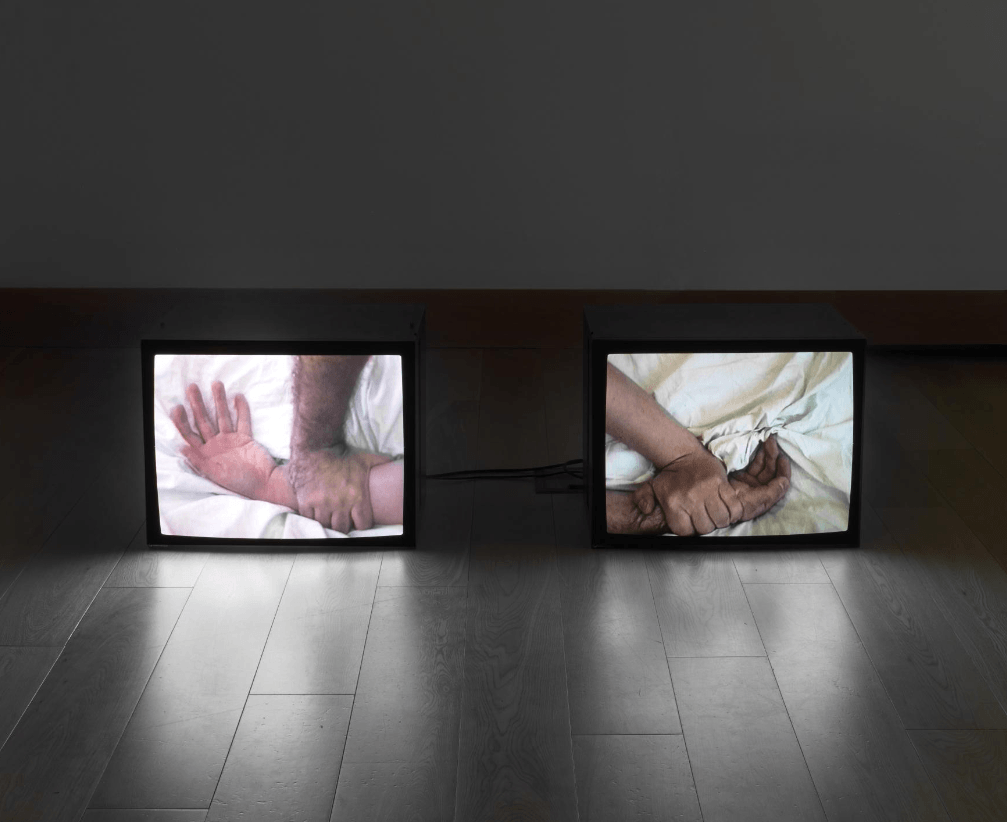
A Divided Self I and II (2012)
On two monitor screens two arms – one hairy and the other shaven – fight one another on a bed sheet. On one monitor the hairy arm defeats the shaven, while the reverse happens on the second monitor. Gradually the viewer becomes aware that the arms belong to the same person suggesting a battle between two halves of the self. The work recalls Robert Louis Stevenson’s ‘The Strange Case of Dr Jekyll and Mr Hyde’ (1886) and the split personality of the key protagonist. The work’s title comes from Scottish psychiatrist R.D. Laing’s (1927-89) pivotal and controversial texts on mental illness ‘The Divided Self: An Existential Study in Sanity and Madness’ (1960).
Artworks Sourced from The National Gallery of Scotland Website
